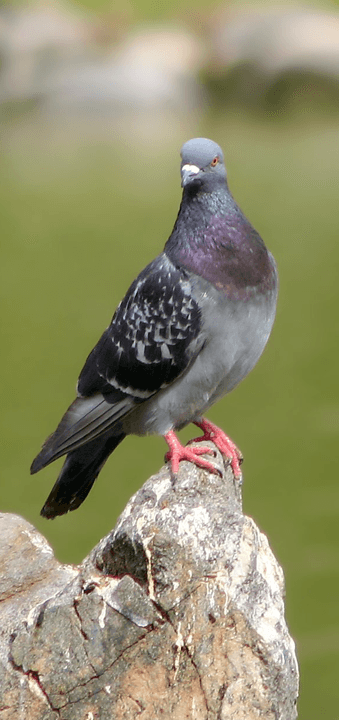They appeared on the Earth 25 million years ago and, since they were domesticated by the Egyptians, they have never stopped being with us. They changed the rocky cliffs for the roof eaves, and their carnivorous diet for the bread crumbs we give them, establishing a close relationship with humans. Proof of this is the increasing popularity of pigeon keeping.
But due to several controversies it has been in question for the last years. They rise in number and out of control in the cities, due to the lack of actual predators in the urban biotope. Only rats and jackdaws eat their eggs. We have to bear in mind that each female rock dove has 6 broods a year, and that in each of them about 12 squabs are born. This means the trifling sum of 72 new doves for each female we see perching in our window.
They lose our sympathies when we face the loss that the damage of their corrosive excretions in buildings implies, as they usually have a high historical or cultural value. These buildings are the ones full with cavities that the doves need for breeding.
Moreover, there has always been awareness of the amount of diseases they can transmit, to the extent of being called “winged rats”. In their favour, we will say that they would only be able transmit psittacosis to humans. This is a rare disease produced by a bacteria that appears in the faeces of the infected animal, and that has a good prediction when antibiotics are administered. However, it has been proved that doves are very resistant to the H5N1 virus (the so called “bird flu”).
To highlight their virtues, we will say they are real air acrobats, given their precision during the flight. In fact, they orient themselves by scent trails, the position of the Sun and magnetic field of the Earth. When flying, they can process visual information three times faster than humans. Their eyes are at the sides of the head, which allows them a vision to up to 340 º. In addition, their head is bent forward in a rhythmical movement when they walk, because they cannot move their eyes; this way, they get a perfect approach. All this gives them the confidence to wait until the last second before running away from a dangerous situation.
If you have enjoyed this post please share it on your social networks.












